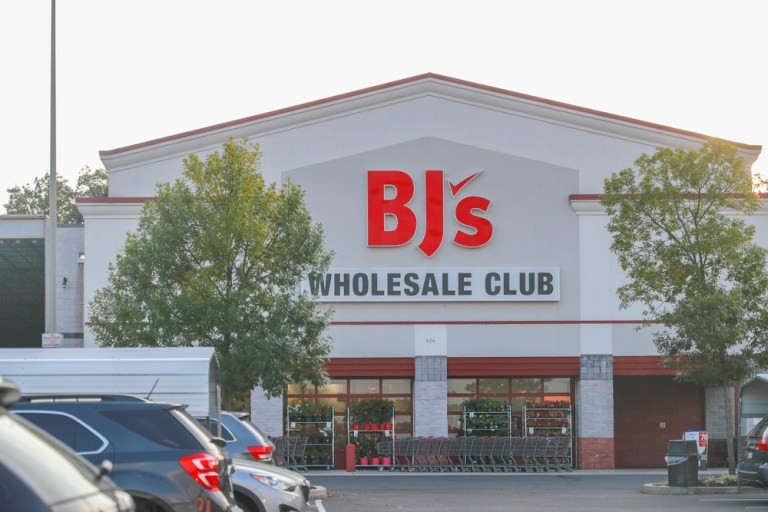
By many metrics, BJ’s Wholesale Club is having a solid year. Since its IPO two months ago, shares are up 70 percent from its $17 IPO price. Despite that impressive growth, BJ’s is occasionally viewed as an “also ran” in the wholesaling section where it competes, doomed to always be running behind its two main competitors, reigning champion in the space Costco, and Walmart-backed Sam’s Club.
The trouble, according to some watchers, is in determining on how, exactly, BJ’s wants to fit into the marketplace. It’s built out its grocery offerings and carries more grocery SKUs than either Sam’s or Costco, and while it offers items in bulk, it also focuses on selling items at more regular scales and sizes. The strategy to differentiate itself has been largely predicated on splitting the difference between being a bulk-based warehouse and something a bit more like a traditional supermarket.
Its sales figures indicate that instead of drawing both kinds of shoppers, however, BJ’s is finding itself stuck in the middle when it comes to generating revenue. Sales have increased marginally over the last few years by only about 1.2 percent. Comparable sales growth has been even more sluggish. Last year, the store finally reported growth in the area (albeit slight at 0.8 percent), reversing a four year trend of falling figures in that area. In the same time period, Costco saw its sales up 22 percent, and Sam’s saw its sales up 5 percent.
BJ’s is a smaller chain than either Sam’s or Costco, with most of its locations clustered in the Northeast. It could move to expand its physical footprint, but that seems unlikely because the trend in the segment hasn’t been toward growth in general. Moreover, BJ’s carries a heavy debt load — around $2 billion — even after using proceeds from its IPO to bring down that debt. With only about $31 million in cash on hand, expansion might be a tall order.
Despite its consistent placement as the bronze finisher in the world of warehouse stores, BJ’s has made a clear push to update and grow its services. Going in to holiday 2018, it looks to be aiming at further diversifying its in-store offerings.
Shortly before its IPO, BJ’s began the full rollout of its Click-and-Collect program, allowing consumers to buy online and pick-up in-store at 215 of its locations. The program also allows consumers to automatically add select coupons to their online orders — something that was once only possible in-store. The upgrade to services followed BJ’s release of a redesigned mobile app last fall.
“The new mobile site is an important step in our omnichannel transformation,” Rafeh Masood, senior vice president and chief digital officer at BJ’s told PYMNTS. “More and more members use their mobile devices every day, and enhancing the BJ’s mobile experience makes shopping more convenient for our members.”
And BJ’s is also looking to update some of its sales offerings to consumers as it seeks to better define its niche in the wholesale warehouse world.
This holiday season, for example, they will be one of the increasing number of retailers planning to throw their hats in the ring to fill the void left behind by the Toys R Us bankruptcy. Amazon, Party City and Target have all announced intentions to do something similar, with Amazon even putting out a special toy calendar.
BJ’s is hoping that a wider selection, better pricing, an exclusive or two and a very early start — the Christmas shopping season has already started at BJ’s — will help push its sales efforts this year.
“BJ’s is thrilled to offer more toys, at unbeatable prices, than ever before, this holiday season,” said Chris Desantis, senior vice president, general merchandise. “We’re helping our members live joyously this holiday season with the convenience of shopping an expanded toy assortment — whether it’s online or in-club — at an outstanding value.”
BJ’s challenge is finding a way to make the ways it is a different, more hybridized wholesale store work for them, instead of against. While one might assume the obvious solution might be to do less, and hone in more, BJ’s instead seems to be doubling down on doing more and developing the diversity of its offering as a strength and a differentiator.
Whether it will work remains to be seen, but with the biggest shopping season of the year about to begin, post-IPO BJ’s will soon have a very active test in the real world to see if more is more when it comes to sales.